Sisense Vs. Tableau – of course, you aspire to get an edge over the competition and expand your business reach. Perhaps you want to improve the internal functioning of your business. There are numerous business intelligence tools to help you achieve your goals.
However, you might be wondering how to cherry pick the most relevant data to grow your business. With the number of business intelligence tools increasing by the day, choice can be overwhelming. Let’s compare Sisense vs Tableau to see if either of the two fits your business needs.
Sisense Vs. Tableau
Overview – Sisense Vs. Tableau
Tableau offers a full suite of products for data analysis and advanced visualization of simple data. It is best suited for medium and larger-end small businesses. Sisense is a cloud based BI tool for complex data analysis, especially suited to organizations that work with diverse data sets.
With Tableau, users can see data connections in ways they cannot visualize with any other BI tool, including Sisense, which presents simple tables and graphs. Tableau enables creation of charts, graphs, visual control panels that can be easily accessed by a user with a simple drag-and-drop option.
Ease of use – Sisense Vs. Tableau
Tableau is easy to use. Its amazing graphic visualizations are easy to understand. Users love it for its shareable dashboards. It is such a user-friendly platform that it can be used by anyone, irrespective of technical, analytical experience. Users need not spend time on creating data models for presentation.
Sisense is a user-friendly interface designed with easy-to-use automated features that can handle complex data. Easy to work with, it does not require data crunching experience. This means even non-technical users can create custom dashboards hassle-free, getting unhindered access to a broad spectrum of business data.
Features Comaprison
Tableau works best with data stored in a single spreadsheet, table, or CSV file. However, any set of data not organized in this way must be transformed before being used with the BI.
Since there are no data transformation tools in Tableau, users must use 3rd party database to transform data to make it compatible for use with the business intelligence solution.
Contrarily, Sisense includes a high-performance database and a user-friendly ETL or data manipulation feature for data transformation.
Sisense includes a central database and can handle complex dataset, which give it an upper hand over Tableau that lacks these features.
Additionally, Tableau can effectively handle millions of data records, and anything bigger than that must be trimmed down before being loaded into the database.
Trimming the data is no easy task and may entails undergoing a data-warehousing project, which involves additional costs, besides adding another layer of complexity to the software.
Trimming the data may have its share of disadvantages, such as removing rows and fields. Contrarily, Sisense can pull data from anywhere and effortlessly support billions of records.
When you import data into Tableau, it enters a proprietary data engine, which is similar to the Excel data engine for storing. Sisense, on the other hand, uses a unique technology that has columnar storage capabilities in addition to in-memory query processing features.
When users try to directly query a table or a view, the efficiency of Tableau software depends on the capabilities of query processing of the target SQL database. On the other hand, the unique Sisense technology enables even those individuals that lack database experience to effortlessly set up and maintain Sisense.
Sisense’s in-chip technology means quick data analysis that ensures better speed, whereas with Tableau users need to create data presentations, which delays decision-making.
Deployment – Sisense Vs. Tableau
While Sisense can be deployed on premises, in the cloud, or in the mobile, Tableau supports on-premises deployment alone. Sisense is designed for small, medium, and large businesses. Tableau is the best BI for solopreneurs, freelancers, small businesses, and nonprofit.
Pricing and Cost – Sisense Vs. Tableau
With Sisense, you can pay as you go and pick a subscription model. However, Tableau requires upfront payment for its one-time license.
Both business intelligence tools offer a free trial.
Sisense Vs. Tableau: Similarities
Both tools support Database Connectivity layer that enables easy integration of data with third party vendor apps, including SAP and Excel. The tools use fast column-based database, ensuring speedy execution of large queries.
Both BI tools provide excellent support over phone and online. However, Sisense gets an upper hand for enabling users to apply for logging tickets for incidents, so they can keep track of history.
Sisense Vs. Tableau: Which is Better
If you are still unsure which BI is the best tool for your business, it is a good idea to check with software experts. Consult the ITQlick software experts to guide you through the BI selection process, so you can decide which way to go – Sisense vs Tableau. Let us help you find the right tool that caters to your specific business needs.
